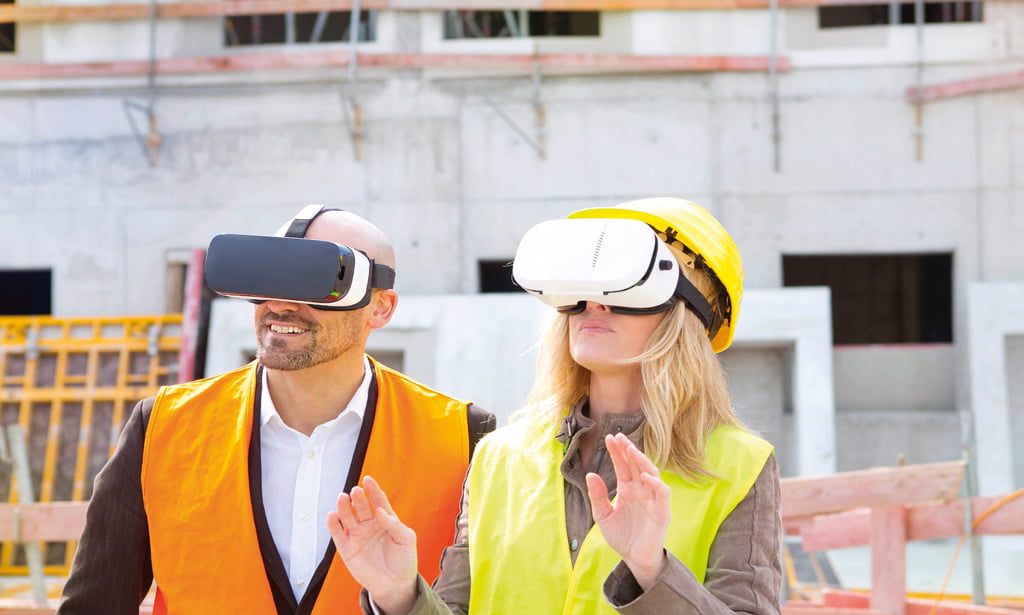Construction Skills Queensland (CSQ) and the CSIRO have launched Farsight, a world first project examining the impact of technological and social changes on the construction workforce over the next two decades.
The project aims to help the construction industry, governments, training organisations and employers adapt to a rapidly evolving construction landscape. As Australia’s third largest employer, major disruptions in the construction industry are expected to have wide ranging implications for the nation’s economy.
CSQ CEO Brett Schimming called for the Australian construction industry to start preparing for an increasingly competitive global environment.
“If other countries embrace new building technologies and Australia doesn’t we could be left behind. Australia is ranked 72nd in the world on innovation efficiency,” he says. “Traditionally Australia has been very strong in research and development. We now have to do more to turn this R&D into commercial realities.”
The construction industry has been a slow innovation adopter and performer among Australian industries – attributed to skills shortages, workers lacking problem-solving skills and less exposure to foreign competition.
“We have to be prepared to invest in new technologies and also get better at the commercialisation process,” Schimming says. “It’s equally important for us to examine our training and education programs to ensure they reflect changes in the industry. We don’t need to fear the rise of technology in our industry. We should embrace it.”
Task automation can create new high-tech jobs, ease the pressures of an ageing workforce, improve productivity, make our industry safer and reduce building costs.
With many technologies in their infancy, it’s difficult to predict how quickly they will develop and be adopted into the construction industry. To help the industry plan ahead, the Farsight Project has used a CSIRO scenario planning model to outline four potential futures which could evolve over the next two decades. The scenarios consider the extent to which tasks will be automated and the innovation culture within the construction industry.
In the first scenario, The Digital Evolution, robot labour technologies have not progressed as quickly as expected. Little has changed in the industry but most major projects are utilising BIM software, which provides 3D modelling and an all-encompassing system for managing every stage of the construction lifecycle.
Tradies are still working in hands on roles, but using exosuits to enhance their strength and agility. A range of wearables are also being used which offer biometric measurements such as heart rate and perspiration levels while monitoring the wearer’s location to alert them to dangerous situations.
Under the second scenario, Smart Collaboration, the promise of smart robots has not been fulfilled but Australia is embracing prefabrication with large numbers of modular houses and buildings being built in factory facilities. The industry is harnessing new tools to make the construction process safer, more productive and less labour intensive. Drones are being used to undertake surveying work and autonomous vehicles are common on building sites.
The third scenario, Globally Challenged, would see the Australian workforce under pressure from advanced manufacturing and robotics facilities in Asia. The majority of construction work is being outsourced to more innovative and low cost producers, reducing the domestic workforce by 90 percent. Australia has failed to develop and utilise smart robots which are capable of undertaking a wide range of manual tasks such as bricklaying.
In the final scenario, Rise of the Robots, Australia has emerged as a global construction innovation hub. The country is the go-to place for testing and refining exosuits and intelligent robots. Advanced prefabrication facilities are attracting massive foreign investment and creating high tech new jobs. Tradies are now working as Building Assembling Technicians and overseeing robotic systems. They are aided by Virtual Reality and 3D Laser mapping devices which allow them to walk around and inspect augmented construction models in a real world environment.
CSIRO’s Data61 and lead author of the report, Dr George Quezada, says these scenarios are not predictions but stories that capture extreme but plausible futures based on the level of task automation (limited vs substantial) and the industry’s innovation culture (cautious vs bold).
“The future is impossible to predict and the world is too complex, so we developed these scenarios to give the industry a framework to start thinking about what could happen over the next 20 years and how might jobs and skills be impacted”, he says.
“CSQ’s lead role in partnering with us is a first step in the right direction in preparing the industry to embrace a future full of significant change and disruption from automation which could lead to futures in which the construction landscape is reshaped and barely recognisable from today.”
“This report provides a reference point for starting conversations throughout the industry about what changes are needed now to ensure an ongoing and thriving construction industry in Australia,” he concludes.
Schimming believes that building and construction is entering an exciting phase.
“Our industry has a very bright future. We must be flexible, adaptable and work to ensure we capitalise on the opportunities which lie ahead,” he says.
For more information on the Farsight Project, and to download the report, head to csq.org.au












